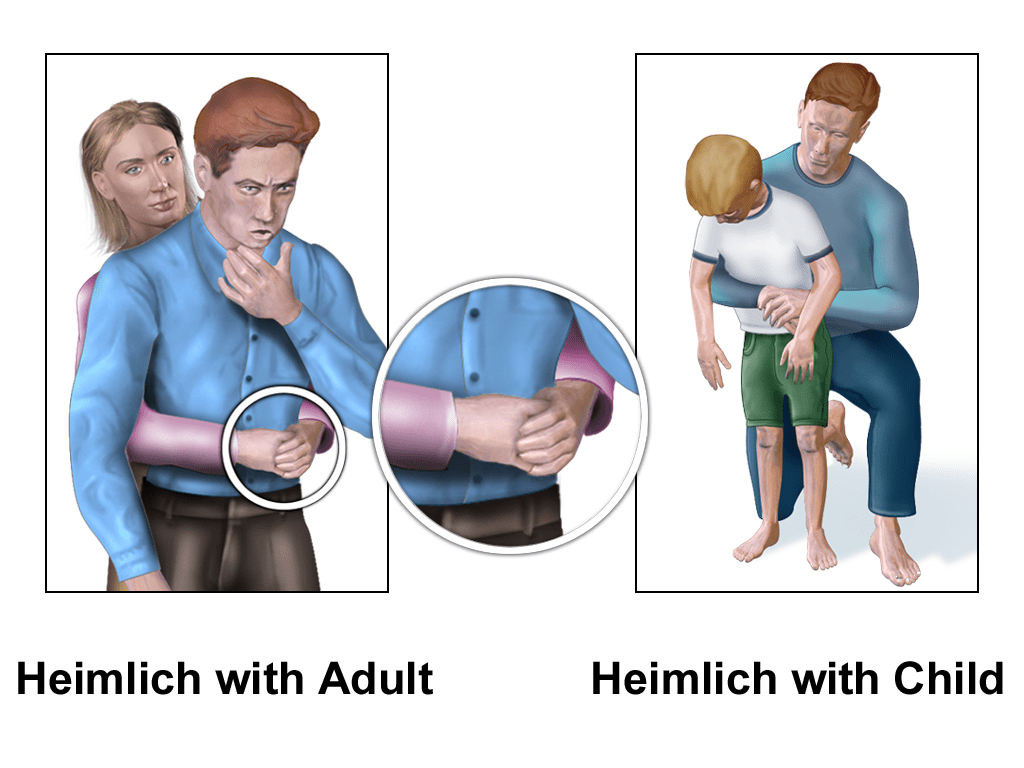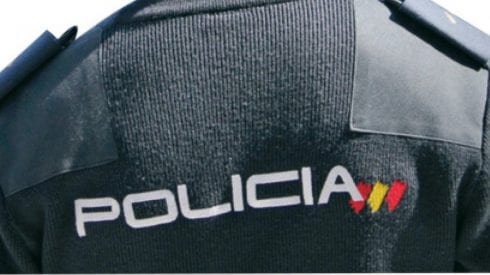
IT’S a moment we all dread to think about.
Someone begins choking and there’s no one around who knows what to do.
For two children this week, that moment came, but with two very different outcomes.
One newborn baby, just 11 days old, was saved thanks to three nearby Policia Local agents who knew how to perform the Heimlich Manoeuvre.
A teenage girl, 15, however, died on the playground in Jaen after choking to death on a sandwich.
You never know when the moment might come that someone near you will begin choking.
So what do you do?
According to NHS guidelines, if the airway is only partly blocked, the person will usually be able to speak, cry, cough or breathe.
They’ll usually be able to clear the blockage themselves.
To help with mild choking in an adult or child over 1 year old:
- Encourage them to keep coughing to try to clear the blockage
- Ask them to try to spit out the object if it’s in their mouth
- Don’t put your fingers in their mouth to help them as they may bite you accidentally
- If coughing doesn’t work, start back blows.
If the choking is severe, the person won’t be able to speak, cry, cough or breathe. Without help, they’ll eventually become unconscious.
To carry out a back blow on an adult or child over one year old:
- Stand behind them and slightly to one side.
- Support their chest with one hand.
- Lean them forward so the object blocking their airway will come out of their mouth, rather than moving further down.
- Give up to five sharp blows between their shoulder blades with the heel of your hand. The heel is between the palm of your hand and your wrist.
- Check if the blockage has cleared.
- If not, give up to 5 abdominal thrusts….
Don’t give abdominal thrusts to babies under one year old or pregnant women.
To carry out an abdominal thrust:
- Stand behind the person who’s choking.
- Place your arms around their waist and bend them forward.
- Clench one fist and place it right above their belly button.
- Put the other hand on top of your fist and pull sharply inwards and upwards.
- Repeat this movement up to five times.
- If the person’s airway is still blocked after trying back blows and abdominal thrusts, get help immediately.
IF A BABY IS CHOKING
If you can see the object, try to remove it. Don’t poke blindly or repeatedly with your fingers. You could make things worse by pushing the object further in and making it harder to remove.
If your child is coughing loudly, encourage them to carry on coughing to bring up what they’re choking on and don’t leave them.
If your child’s coughing isn’t effective (it’s silent or they can’t breathe in properly), shout for help immediately and decide whether they’re still conscious.
If your child’s still conscious, but they’re either not coughing or their coughing isn’t effective, use back blows.
Back blows for babies under one year
- Sit down and lay your baby face down along your thighs, supporting their head with your hand.
- Give up to five sharp back blows with the heel of one hand in the middle of the back between the shoulder blades.
Back blows for children over 1 year
- Lay a small child face down on your lap as you would a baby.
- If this isn’t possible, support your child in a forward-leaning position and give five back blows from behind.
- If back blows don’t relieve the choking and your baby or child is still conscious, give chest thrusts to infants under one year or abdominal thrusts to children over one year.
- This will create an artificial cough, increasing pressure in the chest and helping to dislodge the object.
Chest thrusts for children under 1 year
- Lay your baby face up along the length of your thighs.
- Find the breastbone and place two fingers in the middle.
- Give five sharp chest thrusts (pushes), compressing the chest by about a third.
Abdominal thrusts for children over 1 year
- Stand or kneel behind your child. Place your arms under the child’s arms and around their upper abdomen.
- Clench your fist and place it between the navel and ribs.
- Grasp this hand with your other hand and pull sharply inwards and upwards.
- Repeat up to five times.
- Make sure you don’t apply pressure to the lower ribcage, as this may cause damage.
- If the object still isn’t dislodged and your child’s still conscious, continue the sequence of back blows and either chest or abdominal thrusts.
- Call out or send for help, if you’re still on your own.
- Don’t leave the child.
Even if the object has come out, get medical help. Part of the object might have been left behind, or your child might have been hurt by the procedure.
Unconscious child with choking
If a choking child is, or becomes, unconscious, put them on a firm, flat surface and shout for help.
Call emergency services, putting the phone on speakerphone so your hands are free.
Don’t leave the child at any stage.
Open the child’s mouth. If the object’s clearly visible and you can grasp it easily, remove it.
Start CPR if help is slow to arrive.
Click here to read more Spain News from The Olive Press.









